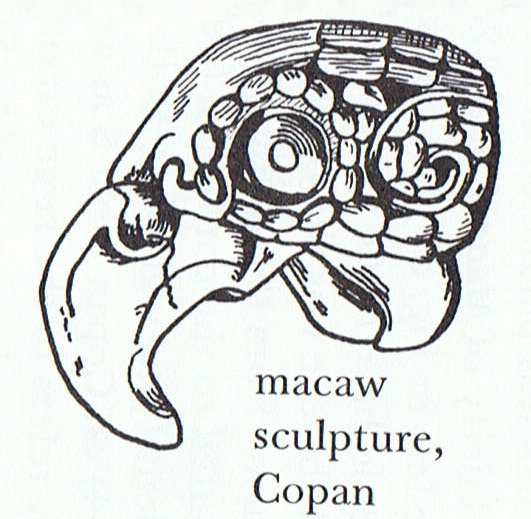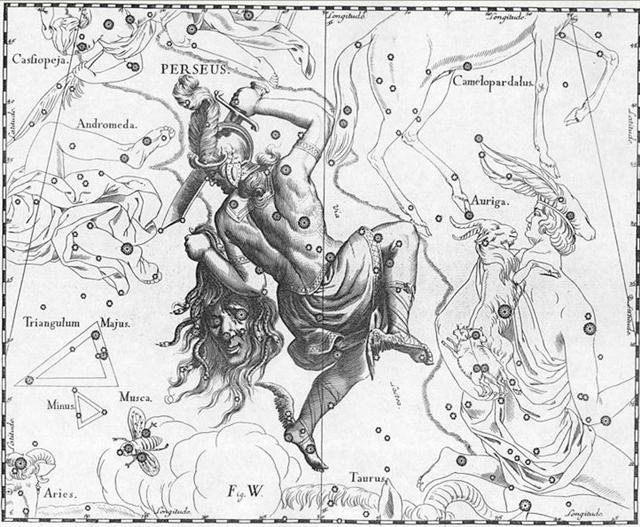385. The Chinese had 3
days with only cold food served, when the all their fires had
been extinguished ('as above, so below'):
... In China, every
year about the beginning of April, certain officials called
Sz'hüen used of old to go about the country armed with
wooden clappers. Their business was to summon the people and
command them to put out every fire. This was the beginning of
the season called Han-shih-tsieh, or 'eating of cold
food'. For three days all household fires remained extinct as a
preparation for the solemn renewal of the fire, which took place
on the fifth or sixth day after the winter solstice [Sic!]
...
Maybe their 'beginning
of April' referred to the dates at the time of Bharani:
|
MARCH 7 |
8 |
9 (68) |
10 |
11 (*355) |
12 (71) |
13 |
 |
 |
 |
 |
 |
 |
 |
|
(229 +
229) |
Gb8-18 (230) |
Gb8-19
(4 * 115) |
Gb8-20
(232) |
Gb8-21 |
Gb8-22 →
4 * 41 |
Gb8-23 →
184 |
|
*50 |
*51 |
*52 |
*53 |
*54
(Febr 23 + 80) |
Tau-Ono |
Alcyone |
|
"March
30 |
31 |
"April 1 |
2 |
3 |
4 |
5 |
|
3 |
3 |
☼52
=
☼84
-
☼16 |
|
First 3-stone place: |
|
MARCH 18 |
19 (☼359) |
20 (*364) |
 |
 |
 |
|
Gb8-28 (240) |
Gb8-29 |
Gb8-30 (☼59) |
|
May 21 (*61) |
*62 |
*63 |
|
"April 10
(100) |
11 |
12 |
"April 13 → 413 → 14 * 29½
corresponded to MARCH 21 (*365 = ☼361):
|
0h (☼361) |
MARCH 22
(*1) |
23 (82) |
|
no glyph |
 |
 |
|
Ga1-1 |
Ga1-2 |
|
HYADUM
II = δ¹ Tauri
(64.2) |
Net-19 (Crow)
AIN (Eye) =
ε
Tauri,
θ¹ Tauri, θ² Tauri (65.7) |
no star
listed (66) |
|
May 24 |
25 (145) |
26 (*66) |
|
°May
20 |
21 (*61) |
22 (142) |
|
'April
27 |
28 (118) |
29 (*39) |
|
"April
13 |
14 (104) |
15 (*25) |
|
... In
north Asia the common mode of reckoning is in
half-year, which are not to be regarded as such but
form each one separately the highest unit of time:
our informants term them 'winter year' and 'summer
year'. Among the Tunguses the former comprises 6½
months, the latter 5, but the year is said to have
13 months; in Kamchatka each contains six months,
the winter year beginning in November, the summer
year in May; the Gilyaks on the other hand give five
months to summer and seven to winter. The Yeneseisk
Ostiaks reckon and name only the seven winter
months, and not the summer months. This mode of
reckoning seems to be a peculiarity of the far
north: the Icelanders reckoned in misseri,
half-years, not in whole years, and the rune-staves
divide the year into a summer and a winter half,
beginning on April 14 [4-14] and October 14
respectively. But in Germany too, when it was
desired to denote the whole year, the combined
phrase 'winter and summer' was employed, or else
equivalent concrete expressions such as 'in bareness
and in leaf', 'in straw and in grass'
... |
|
3-9 (68
= 83 - 15 |
3-10 (☼350) |
3-11 |
3-12
|
|
MARCH 24
(83) |
25 (☼365
= ☼359
+ 6) |
26 (*5) |
27 |
 |
 |
 |
 |
|
Ga1-3 |
Ga1-4 |
Ga1-5 |
Ga1-6 |
|
no star
listed (67) |
Rohini-4 (The Red One) /
Pidnu-sha-Shame-4 (Furrow of Heaven)
/
ANA-MURI-2 (Rear pillar - at the foot of which was
the place for tattooing)
ALDEBARAN = α Tauri
(68.2),
THEEMIN
= υ² Eridani
(68.5) |
no star
listed (69) |
no star
listed (70) |
|
May 27 |
28 (148) |
29 (*68
+ 1) |
30 |
|
°May
23 |
24 (144) |
25 (*64 + 1) |
26 |
|
'April
30 |
'May 1
(121) |
2 (*41 +
1) |
3 |
|
16 (471) |
"April
17 (107) |
18 (☼24
= ☼23
+ 1) |
19 |
|
Itzam-Yeh (7-Macaw, Ursa Major) defeated |
28 May, 3149 BC (148) |
|
First 3-stone place |
21 May, 3114 BC (141) |
|
Creation of our present world |
13 Aug, 3114 BC (225) |
|
Hun-Nal-Ye became the sky |
5 Febr, 3112 BC (36) |
|
21 May,
3114 BC - 13 August,
3114 BC = 225 - 141 = 84 (= 12 * 7)
21 May, 3114 BC -
5 February,
3112 BC =
542, which
'happens to be' the sum of 365 days and 6 *
29½ nights.
At the time of rongorongo the day May 28
(148, *68) was where Aldebaran rose with the
Sun and 77 days later, in August 13 (225,
*145) the Sun had reached the Knot (Ukdah)
with the Full Moon at the Foundation
(Bunda). |
 |
|
When Aldebaran at the time of the Bull had
passed through the rays from the Sun (and having returned to visbility 11 + 69 = 80
days after the solstice) it should have meant a new 'fire'
(year) had been alighted high up in the sky.
... the
Palenque scribes repeated Creation again and described it as
'it was made visible, the image at Lying-down-Sky, the
First-Three-Stone-Place'. Then we learned that five hundred
and forty-two days later (1.9.2 in the Maya system),
Hun-Nal-Ye 'entered or became the sky' (och ta chan).
This 'entering' event occurred on February 5, 3112 B.C. The
act of 'entering the sky' is recorded on another
extraordinary painted pot.

This pot
depicts one of the Hero Twins (One-Ahaw in the Classic texts
and One-Hunaphu in the K'iche' Popol Vuh) and a great
bird who is trying to land in a huge ceiba tree heavy with
fruit. This mythical bird is Itzam-Yeh, Classic
prototype of Wuqub-Kaqix, 'Seven-Macaw', of Popol
Vuh fame. In that story, in the time before the sky was
lifted up to make room for the light, the vainglorious
Seven-Macaw imagined himself to be the sun. Offended by his
pride, the Hero Twins humbled him by breaking his beautiful
shining tooth with a pellet from their blowgun. This pot
shows One-Ahaw aiming at the bird as he swoops down to land
in his tree. As Itzam-Yeh lands on his perch, the
text tells us he is 'entering or becoming the sky'. This
particular 'sky-entering' is not the one mentioned in the
Palenque text. It is the final event that occurred in the
previous creation before the universe was remade. Before the
sky could be raised and the real sun revealed in all its
splendor, the Hero Twins had to put the false sun,
Itzam-Yeh, in his place. If the date on this pot
corresponds to that pre-Creation event, as we believe it
does, then Itzam-Yeh was defeated in 12.18.4.5.0 1
Ahaw 3 K'ank'in (May 28, 3149 B.C.). After the new
universe was finally brought into existence, First Father
also entered the sky by landing in the tree, just as
Itzam-Yeh did
...
.jpg)
Since then the stars had moved
ahead in the Sun calendar due to the precession and this sign of a
'new fire' had therefore moved
from MARCH 25 (84) to "April 17 (107 = 84 + 20 + 3). The Chinese 'winter solstice' could
therefore have referred to
the 'year in straw', when nothing grew and when life was
absent in Mother Nature because the Sun was at the other
side of the equator.
"April 17 (107) was 23 days later than day
107 - 23 = 84 ("March 25) - corresponding to the date for spring equinox
in the Julian calendar. And on Hawaii the effigy of Lono
had completed its circuit after 23 days:
|
2-14 (45 = 60 - 15) |
2-15 (☼327) |
2-16 (365 + 47 = 412) |
2-17 (14 * 29½) |
2-18 (414) |
19 |
3-10 (☼350) |
|
MARCH 1 (*345) |
2 (61) |
3 (427
=
☼343
+ 84) |
4 (*348 = 12 *
29) |
5 (8 * 8) |
25 (☼359
+ ☼6) |
 |
 |
 |
 |
 |
 |
|
Gb8-11 |
Gb8-12 |
Gb8-13 (454) |
Gb8-14 |
Gb8-15 (227 →π) |
Ga1-4 |
|
MENKAR (The Nose) = α Ceti
(44.7) |
3h (45.7)
GORGONEA TERTIA = ρ Persei
(45.1),
ALGOL (The Demon) = β Persei
(45.9) |
ι
Persei (46.1),
MISAM (Next to the Pleiades) =
κ
Persei
(46.2),
GORGONEA QUARTA =
ω
Persei
(46.7),
BOTEIN (Pair of Bellies) =
δ
Arietis
(46.9) |
ζ Arietis (47.7) |
ZIBAL (Young Ostriches) = ζ Eridani
(48.0), κ Ceti (48.9) |
Rohini-4 (The Red One) /
Pidnu-sha-Shame-4 (Furrow of Heaven)
/
ANA-MURI-2 (Rear pillar - at the foot of which was
the place for tattooing)
ALDEBARAN = α Tauri
(68.2),
THEEMIN
= υ² Eridani
(68.5) |
|
May 4 (*409) |
5 (*45) |
6 (491) |
7 (12 * 41) |
8 (*48 = 148 - 100) |
28 (148) |
|
°April 30 |
°May 1 (*41) |
2 (487 = 464 + 23) |
3 (8 * 61) |
4 (*44 = 144 -
100) |
24 (144) |
|
'April 7 (*382) |
8 (*18) |
9 (464) |
10 (5 * 93) |
11 (*21 = 121 -
100) |
'May 1 (121) |
|
"March 24 (*368) |
Julian equinox |
26 (450) |
27 (11 * 41) |
28 (*7 = 107 - 100) |
"April 17 (107) |
|
... The correspondence between the winter solstice and the
kali'i rite of the Makahiki is arrived at as
follows: ideally, the second ceremony of 'breaking the
coconut', when the priests assemble at the temple to spot
the rising of the Pleiades, coincides with the full moon (Hua
tapu) of the twelfth lunar month (Welehu). In the
latter eighteenth century, the Pleiades appear at sunset on
18 November. Ten days later (28 November), the Lono
effigy sets off on its circuit, which lasts twenty-three
days, thus bringing the god back for the climactic battle
with the king on 21 December, the solstice (= Hawaiian 16
Makali'i). The correspondence is 'ideal' and only rarely
achieved, since it depends on the coincidence of the full
moon and the crepuscular rising of the Pleiades
... |
Evidently the Lono circuit could have
referred to the precessional time difference between
Algol at the time of the Bull and Algol at the time
of Bharani. *64 - *41 = *23 and "March 25 (449 = 365
+ 84) = MARCH 2 (426 = 365 + 61) + 23. Similarly
there were 23 precessional days up from the time of
Caesar to the time of Gregory XIII - 'April 9 (365 +
99) + 23 =
°May 2 (365 + 122).

|









.jpg)


